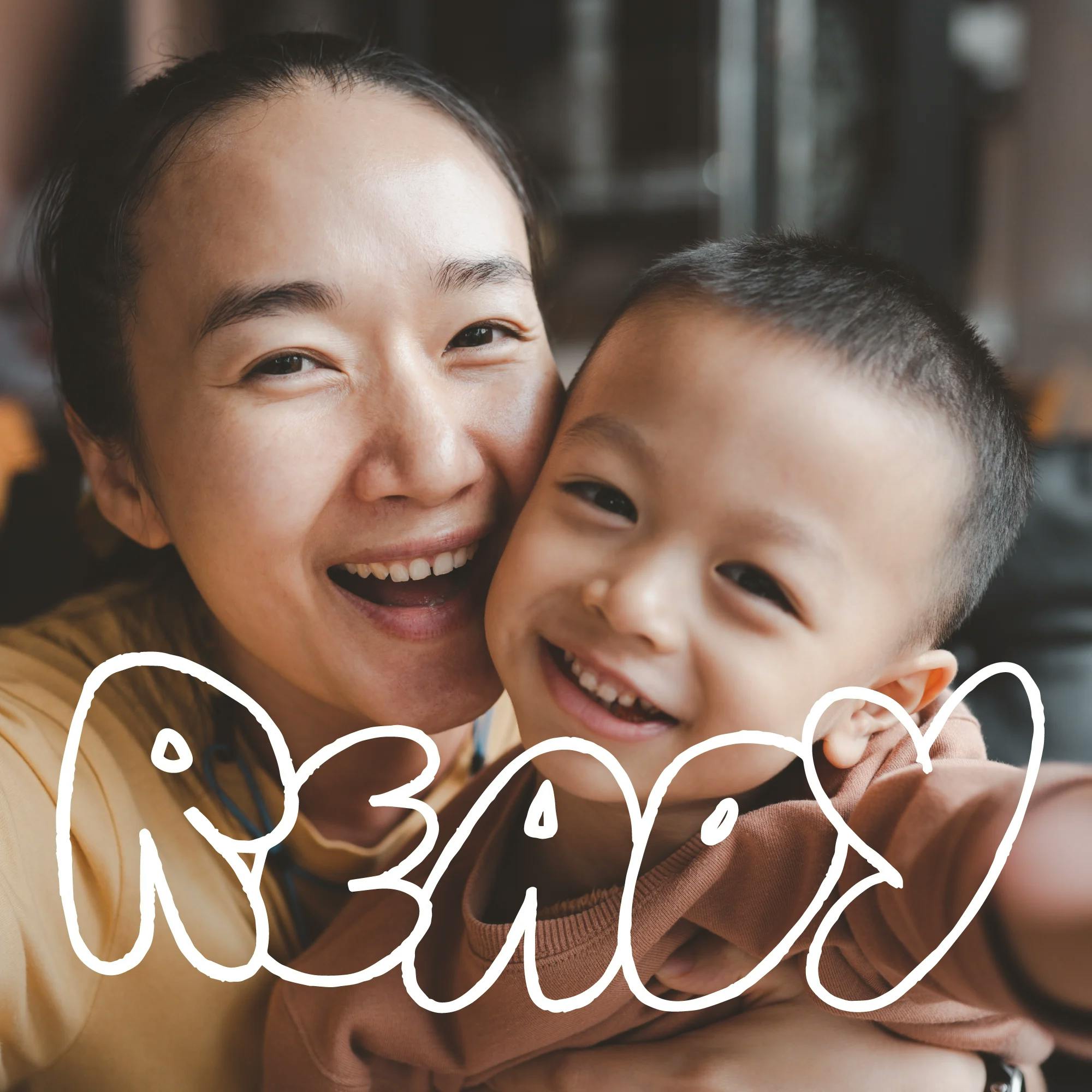Many toddlers benefit from working with a speech therapist. These professionals can help with verbal and nonverbal communication, using play skills, and learning to socialize. Yet knowing if or when your child would benefit from speech therapy for toddlers is tricky. Here are some signs that speech therapy may be a good fit, as well as at-home strategies to improve communication.
Toddlerhood often gets a reputation for being messy, busy, and unpredictable. While it can be all those things, that image doesn’t fully capture how your child’s personality begins to shine as they grow. Between the ages of 1 and 3 years old, children often say their first words, learn to communicate with others verbally and nonverbally, and explore and interact with more of the world around them.
Yet as toddlers learn to communicate, it’s not always smooth sailing. They may have trouble getting their point across, or they may struggle to pronounce certain words or sounds. Plus, there’s probably a toddler tantrum or two (or many) thrown in there.
All this may leave you asking if your child would benefit from speech therapy for toddlers. It can be difficult to tell whether what you're seeing is typical development or a sign your child needs extra support. Ahead, we’ll detail the key signs that it’s time for a toddler speech therapy evaluation and walk through what happens during a speech therapy session. We’ll also provide simple home strategies you can use to grow your toddler’s communication.
Knowledge is power
Take 5 minutes to check your child’s speech milestones with our free online screener.
 Start the screener
Start the screenerHow to use this guide
Take a few minutes to skim what speech therapy for toddlers is, as well as what to expect during a session.
Determine if speech therapy makes sense for your toddler by identifying which communication milestones they are and aren’t hitting.
Learn a few play-based, at-home strategies to help your toddler communicate more clearly.
Find out how to work with your toddler’s teacher or care provider on their communication skills.
What is speech therapy for toddlers?
Speech therapy helps children and adults communicate better. It addresses any barriers caused by speech impediments or hearing problems, and strengthens the muscles used when talking, feeding, and swallowing. For 1- to 3-year-olds, it often looks like play-based sessions involving a licensed speech therapist, the toddler, and one or more caregivers.
“Speech therapy for toddlers is all about helping little ones learn to communicate through play,” says Alexis Irazoque, MS, L/SLP, speech-language pathologist at Expressable. “Building strong speech and language skills early helps set the foundation for communication and learning once they start school.”
Depending on a child’s needs, speech therapy sessions may:
Address feeding and swallowing issues
Help a child use expressive language or receptive language
Teach a child to clearly pronounce words or sounds
Help improve overall communication with others
Speech therapists also show the child’s parent or caregiver how to practice these new skills at home, so their child makes faster progress.


Milestones & signs it’s time for an evaluation
Every child develops a unique communication style at their own pace. That said, the American Speech-Language-Hearing Association lays out feeding and swallowing and communication milestones children should meet by certain ages.
12-18 months
Toddlers between 12 and 18 months old should be able to sit upright on the floor or a flat surface. They should be able to feed themselves with fingers or utensils and drink from a sippy cup on their own without spilling.
When it comes to communication milestones, children this age typically look around when asked a “where” question, such as “Where is your sippy cup?” They may follow simple directions, such as “Come here.” Children typically say their first word at around 12 months old, although for some toddlers it’s a little later.
Nonverbal communication typically develops by 18 months. This means they can shake their head for “no” and nod for “yes,” nonverbally identify some body parts, and use some gestures, like clapping when excited or pointing at objects to answer a question or get information.
18-24 months
At the 18-24 month mark, toddlers may be able to feed themselves with fingers and utensils, and drink from an open cup using their own hands, with little to no spilling. They may also chew food on both sides of the mouth, as well as chew and swallow food without spilling.
By this age, children usually understand and use at least 50 words. That includes putting two or more words together, such as “go inside” or “more food.” Eighteen- to 24-month-olds can usually follow two-step directions, such as “Go inside and take off your coat.” Around this age, they may start to use possessive words, like “Mommy’s shoes.”


2-3 years
At 2 to 3 years old, a toddler is usually able to feed themself with utensils and fingers, drink from an open cup with no spilling, and chew all foods, even those with rougher textures. Their speech is typically clearer, though people who do not know the child may still have difficulty understanding them.
Older toddlers use certain word combinations often. If someone asks them what their name is, they can answer. This is also around the time when most toddlers start to use -ing verbs (“running,” “eating”) and the plural of certain words, like “dolls” or “cars.” They may also add -ed to verbs when talking about past actions, like “played.”
Two- to 3-year-olds usually like to give reasons for things or events, such as saying they need a jacket if it’s raining outside. Older toddlers may also ask and answer “why” and “how” questions. They can correctly pronounce most vowels in words and the consonant sounds /p/, /b/, /m/, /h/, /w/, /d/, and /n/.
Signs speech therapy may be useful
“All toddlers develop at their own pace, but there are some signs that may mean a child could benefit from speech therapy,” says Irazoque, “Signs parents often overlook are trouble understanding what others say or not using gestures like pointing and waving. These are important early communication skills.” Other signs are age-specific.
At 12 months old
The child doesn’t communicate with gestures, like pointing or waving.
They have trouble imitating simple sounds.
At 18 months old
The child prefers using gestures over sounds or words to communicate.
They struggle with simple verbal requests, like “Bring me the doll.”
At 24 months old
The child can imitate speech or actions, but they don’t say phrases or words on their own.
They only say some sounds or words repeatedly.
They can't use words to communicate, other than for their immediate needs.
The child can’t follow simple directions.
At 36 months old
The child doesn’t use 200 different words or more.
They can’t ask for things by name.
The child is hard to understand, even for those who live with them.

How to find a speech therapist for toddlers
If you believe your toddler may benefit from expert help, it’s time to search for a speech therapist for toddlers. Look for someone who is licensed and certified; follows a play-based, child-led approach; and feels like a good fit for your family.
One of the best places to start your speech therapist search is with your pediatrician. They may be able to refer you to the best speech therapists in the area, as well as provide insight into your child’s overall development.
You can also search online directories for licensed speech-language pathologists (SLPs) with experience helping toddlers. Just make sure to look at their credentials and approach, as well as if they accept your insurance and have availability. To speed up the process, reach out to Expressable. We can match you with a SLP who has the right experience and approach.

No matter where you find your speech therapist, remember: it’s important that they’re a great fit for your family and understand speech development at your child’s specific age. “Choose a therapist who specializes in early language development and uses a play-based, child-led approach,” advises Irazoque, “For toddlers, speech therapy should feel like fun and connection, not work! The child should enjoy sessions and feel comfortable with their therapist.”
She also stresses that an effective speech therapist for toddlers values caregiver involvement. Children make even greater progress when their caregivers participate during and between sessions. Irazoque adds, “Ultimately, families want a therapist who makes them feel supported, communicates clearly, and helps them feel confident in how to encourage their child’s communication every day.”
What to expect at an evaluation
Speech therapy starts with a thorough evaluation. Your therapist will review your toddler’s medical and developmental history. They’ll ask you about any specific concerns you have and what you’re noticing at home.
From there, they’ll conduct a play-based assessment, which can be virtual or in-person. The therapist will watch how your child speaks, plays, and interacts with the world around them. They’ll also assess their receptive language skills (how much they understand) and expressive language skills (how much they can communicate), as well as their oral-motor skills for speech and feeding.
They may use a standardized assessment tool, such as the Receptive-Expressive Emergent Language Test (REEL-4) or the Preschool Language Scale (PLS-5). The results can help the speech therapist create a tailored treatment plan with meaningful goals.

Working with your therapist
If the evaluation finds that speech therapy is recommended, it’s time to start regular sessions. These therapy sessions can occur in-person or online—research shows either works just as well.
Whether virtual or in-person, many parents wonder, “How will my child sit still for speech therapy?” The answer: Speech therapists don’t expect them to! Sessions for toddlers aren’t formal one-on-one lessons that involve staring at a screen. The focus is on play-based activities, since that’s how toddlers learn best. “Play is how young children learn to communicate,” explains Irazoque. “The speech therapist will use toys, games, songs, and routines the child enjoys to teach speech and language skills in a natural way.”
Parents and caregivers are a big part of the process. During sessions, the speech therapist will teach you how to play with your child in a way that boosts communication.
If, for example, a 3-year-old is practicing the /m/ sound, the therapist might use a puzzle and model the word “more” whenever the child wants another piece. Or if the goal is learning size words like “big” and “small,” the session may involve Play-Doh so a 2-year-old can build big and small shapes. These are just a few examples, since sessions should be child-led. That means the toddler’s interests and needs help set the agenda.
And toddlers aren’t the only ones who get to play during speech therapy. Caregivers should participate in the session as well. “Parents and caregivers are a big part of the process,” says Irazoque. “The speech therapist will coach caregivers during sessions, teaching them how to play with their child in a way that boosts communication. They’ll also show parents how to keep practicing at home during everyday routines, like mealtime or bedtime. These small moments add up and make a huge difference in their child’s communication growth.”
Inside the session: Watch a toddler having fun with online speech therapy!
Watch hereHome strategies (play-based, pressure-free)
As mentioned above, a central part of speech therapy for toddlers is caregiver coaching. Your speech therapist will help you find moments throughout the day when you can practice communication with your child. At-home practice reduces parents' stress and helps your child make faster progress. And you don’t need to set aside extra time to do it; learning can happen all day long. “Some of my favorite at-home strategies for toddlers are the ones that fit naturally into daily routines, because that’s where the best language learning happens,” says Irazoque, “I love showing parents how to turn everyday moments like mealtime, bath time, or playtime into fun opportunities to build language.”
Here are some easy home activities for toddlers that help build speech and language skills:
Offer choices that encourage a child to express what they want. For example, “Do you want to read the story about dogs, or the one about cats?” If you can, show your child the options at the same time–so, hold up the book about dogs and the book about cats.
Model words or phrases during play. For example, you can say “pop!” when playing with bubbles.
Play games where your toddler has to take turns, such as playing catch or rolling a ball back and forth.
Model real-life language and routines with pretend play. If you’re “cooking” a meal in a toy kitchen, talk about the ingredients and the steps involved.
When reading, ask your child questions. If the story mentions a fairy, for example, you could ask your child to point to the fairy on the page.
Practice OWL (observe, wait, listen). Give your toddler time to process and respond after you ask them a question.

How to collaborate with your toddler’s teacher or care provider
It takes a village to raise a child—and that age-old saying has never been more true than it is today. That’s why it’s important to share your toddler’s needs with their teacher or care provider. Some communication struggles may not be immediately obvious in classroom or day care settings.
Your speech therapist can work with your child’s teachers on how to best support your toddler in the classroom. Recommended steps may include:
Using a visual schedule, word walls, picture cards, or other visual supports
Labeling items in the classroom
Repeating key phrases, such as instructions or parts of the classroom routine
Setting up turn-taking games for students to play
Encouraging your child to participate with low-pressure questions
Your speech therapist may create a customized one-page plan for caregivers and teachers. This plan will outline cues, activities, and important information about your toddler’s unique needs.


Supplies master list
Speech help for toddlers centers around play. So for practicing at home, you don’t have to run out and buy special materials. Toys, books, and even household items that you already have can all be used for language learning:
Age-appropriate books with clear images
Dress-up clothes for imaginative playtime and to ask children questions like “Who are you pretending to be?” and “What are you wearing?”
Measuring cups and spoons from your kitchen to learn words related to food, sizes, and amounts
Sticker chart to track when they say new words or hit other communication milestones
Stuffed animals and dolls to role-play scenarios, such as a day at daycare or a tea party
Age-appropriate pretend-play sets, such as a toy vet kit or toy tool kit
Storage bins for clean-up time and to rotate toys
Family photos to talk about who’s in them and what’s happening


When to seek care
“If a child isn’t using many words, isn’t following simple directions like ‘get your shoes,’ or uses gestures more than words to communicate, I always say it’s time to check in with a speech-language pathologist,” recommends Irazoque. From there, the speech therapist can conduct an evaluation and provide a tailored plan of action, which often includes a mix of speech therapy sessions and at-home activities.
Key takeaways
Speech therapy helps toddlers build foundational communication and speaking skills.
Toddlers who benefit the most from speech therapy are those who don’t meet age-appropriate milestones for communication, feeding, or swallowing.
Look for a licensed speech-language pathologist who follows a child-led, play-based approach and offers caregiver coaching. For faster progress, be sure to practice communication skills at home.
Frequently asked questions
At what age should a toddler see a speech therapist?
A toddler can see a speech therapist at any age. A key sign it’s time to seek care is if they aren’t meeting communication or feeding milestones for their age. A 24-month-old toddler, for example, should be able to feed themselves and understand and use at least 50 words. To find out if your child might need an evaluation, take our free online screener. Questions are tailored by age, and you’ll get immediate results.
What is done in speech therapy for toddlers?
Speech therapy for toddlers centers around play. A speech therapist will often set a goal for a specific session, such as learning to pronounce the /w/ sound or understanding simple verbal directions. Guided by the child’s interests, they will then design fun activities using toys, games, and other items.
What is the red flag for speech delay?
Red flags for speech delay depend on a child’s age. Two red flags at 36 months old, for example, are if the child doesn’t ask for things by name, or their primary caregiver can’t understand them when they talk. In contrast, these would not be cause for concern for a 13-month-old child. See this article for signs of speech delay by age.
At what age is speech delay a concern?
Speech delay can be a concern at any age. It’s usually defined as a child not meeting age-appropriate communication milestones. At 9-12 months, a child should be able to babble, while at 13-18 months, they should be saying a few words and following simple directions. By 18-24 months, a child should understand at least 50 words and be able to use two or more words together. A 2-year-old to 3-year-old should use at least 200 different words and be easier to understand when they speak.
How do I stimulate my toddler's speech?
The best way to stimulate your toddler’s speech is to play and talk with them often. Describe your actions out loud while you make breakfast or give them a bath. Read books together and ask them to point at different parts of the pictures. Model words during playtime for them to hear and imitate, like “my turn” or “fast car!” If a toddler isn’t meeting age-specific communication milestones, a speech therapist can provide further help and insight.
How Expressable Can Help
Concerned your child isn't reaching age-expected milestones? Looking for communication support from a professional? Expressable is a national online speech therapy practice serving children and adults. We treat all major areas of communication and feeding, offer flexible hours including evenings and weekends, and accept most major health insurance plans. We’re proud to have earned more than 3,000 5-star reviews from our clients (4.9/5 average).
Our therapy model is centered on parent and caregiver involvement. Research proves that empowering caregivers to participate in their loved one’s therapy leads to better outcomes. That’s why we combine live, 1-on-1 speech therapy with personalized education and home practice activities for faster progress.
Communication is more than words. It’s how we share how we feel and show who we are. We’re here to help you or your child do just that.











